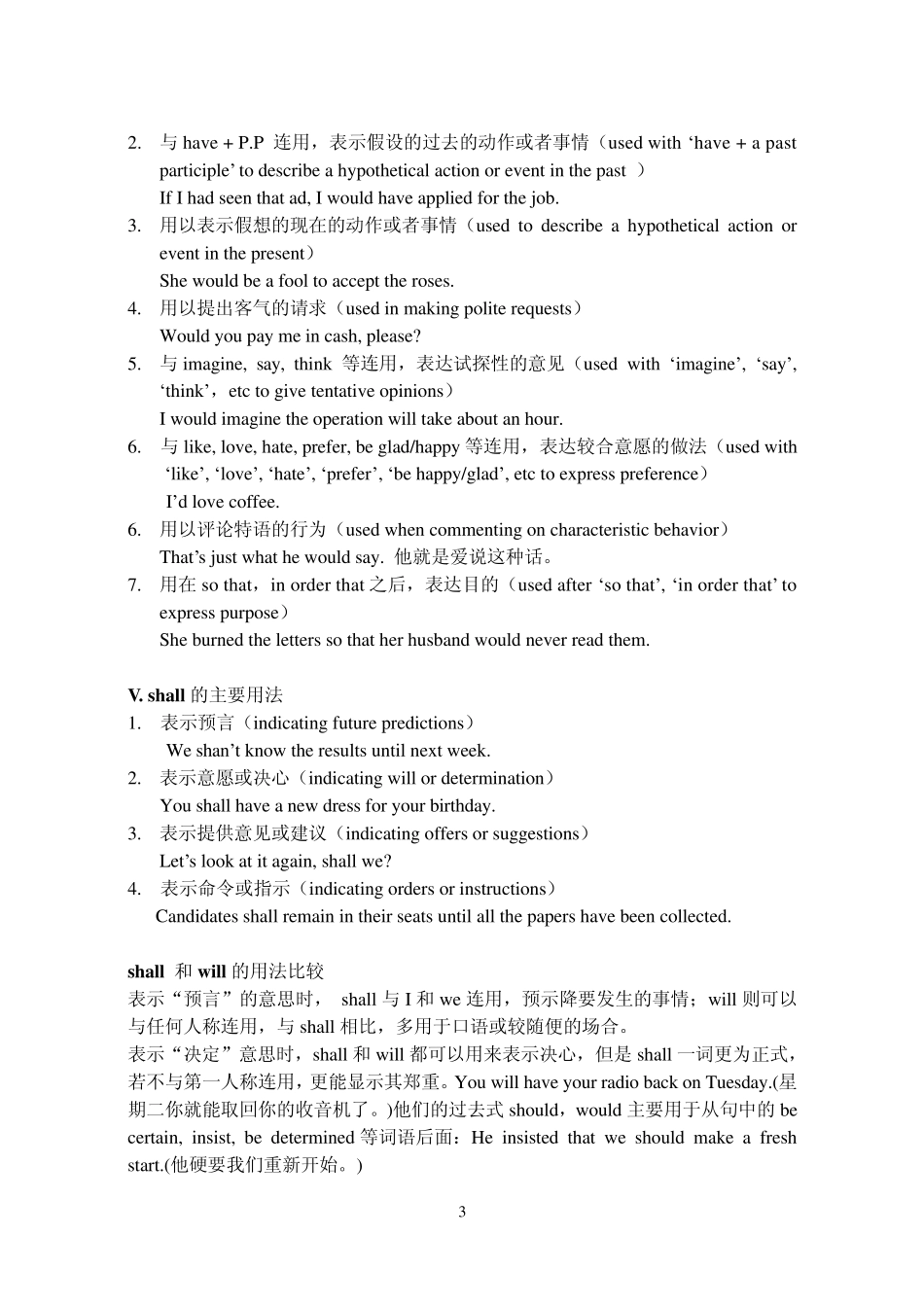1 情态动词的用法小结 I、can 的主要用法 1.表示能力(indicating ability) I can run very fast. 2.表示获得的知识或技能(indicating acquired knowledge or skill) They can speak French. 3.与感官动词连用(used with verbs of perception) I can hear music. 4.表示许可(indicating permission) Can I read your newspapers? 5.表示要求 (indicating requests) Can you feed the cat? 6.表示可能性(indicating possibility) He can’t have slept through all that noise. 7.用以表示疑惑或怀疑(used to express bewilderment or incredulity) Can she be serious? 8.用以描述特有的行为或情形(used to describe typical behavior or state) It can be quite windy on the hills 山上的风就是那么大。 9.用以提出建议(used to make suggestions) We can eat in a restaurant, if you like. II. may 的主要用法 1. 表示允许、许可(indicating permission) You may come, if you wish. 2. 表示可能(indicating possibility) This coat may be Peter’s. 3. 表示目的(indicating purpose) I will write today so that he may know when to meet us. 4. 用以表示愿望和希望(used to express wishes and hopes) May you both be very happy. can, could, may, might 的用法比较 在表示“许可”这层意思时,英国人一般用can 来表示准许或请求许可。could 一词更客气些,但是指用于疑问句中。May是比较郑重的词,但是美国人常用may,英国人常用can。不过英美都使用could 和might 表示怀疑、羞怯等。 在表示可能性的时候,could、might 比may更含怀疑或犹豫之意。比较这两个句子: 2 That may be our taxi. 那辆有可能就是我们的计程车了 That could/might be our taxi, (but I doubt it) 那辆有可能是我们的计程车。(但是我有所怀疑)。 在疑问和否定句中,用can 来代替may。另外could have、may have、might have 用以表示故去发生过某事的可能性。如:He could have forgotten to tell him. 在表达“目的”的意思时,may 可用于 so that, in order that 之后,表示现在的目的。若要表示过去的目的,则用might 或 would。...


